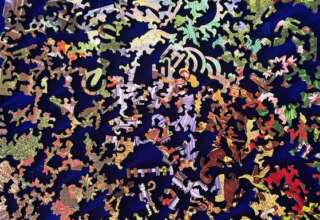
I was attending this service with an African American colleague. She began to quietly cry when the money was being donated. I asked her what was happening. She told me that this was the type of generosity that her grandmother had described as being prevalent in the Black church she attended in Philadelphia. My colleague and I reflected on the way this community provided protection for all its members. You don’t need fire insurance, when you can trust that your neighbors will pitch in their own money and (as we were later told) help to rebuild the home. This is pure social exchange, whereas formal insurance policies are found on the principles of market exchange. There is the blending of religion and social welfare—this is what Robert Bellah and Olupona identify as civic religion. It resides in African communities and in an Africa-centric community such as Red Top. Theory A is alive and well!
Constructivist Leadership
The powerful charismatic leader in African society typically relies on oral (rather than written) communication. Leaders are influential if they are persuasive speakers, if they can tell a compelling story, if they connect directly and intimately with their audience. In this oral tradition there is greater room for interpretation and the reconstruction of reality. When words are written down, they are much harder to change then when they are spoken. Furthermore, spoken words are very contextual in nature: tone of voice, posture, physical setting, and the relationships that exist among those who are present to hear the oral presentation all determine what the statement means and how one should respond to these spoken words.
The Emperor’s Ways
We can turn to the life and practices of one (notorious) leader in African history, Halle Selassie, to see how this oral/constructivist process played out in one specific African country (Ethiopia). We devote a few words specifically to Emperor Selassie who ruled over this country for many years during the early 20th Century. Following are several observations made by Ryszard Kapuściśski (1989, p. 7). He suggests that the Emperor was not only a bit paranoid (justifiably) but also deeply embedded in the royal tradition:










Charly Wiliamse
August 16, 2021 at 10:23 pm
I have thought so many times of entering the blogging world as I love reading them. I think I finally have the courage to give it a try. Thank you so much for all of the ideas!
power bi course
December 7, 2021 at 7:29 am
Thanks for sharing information.